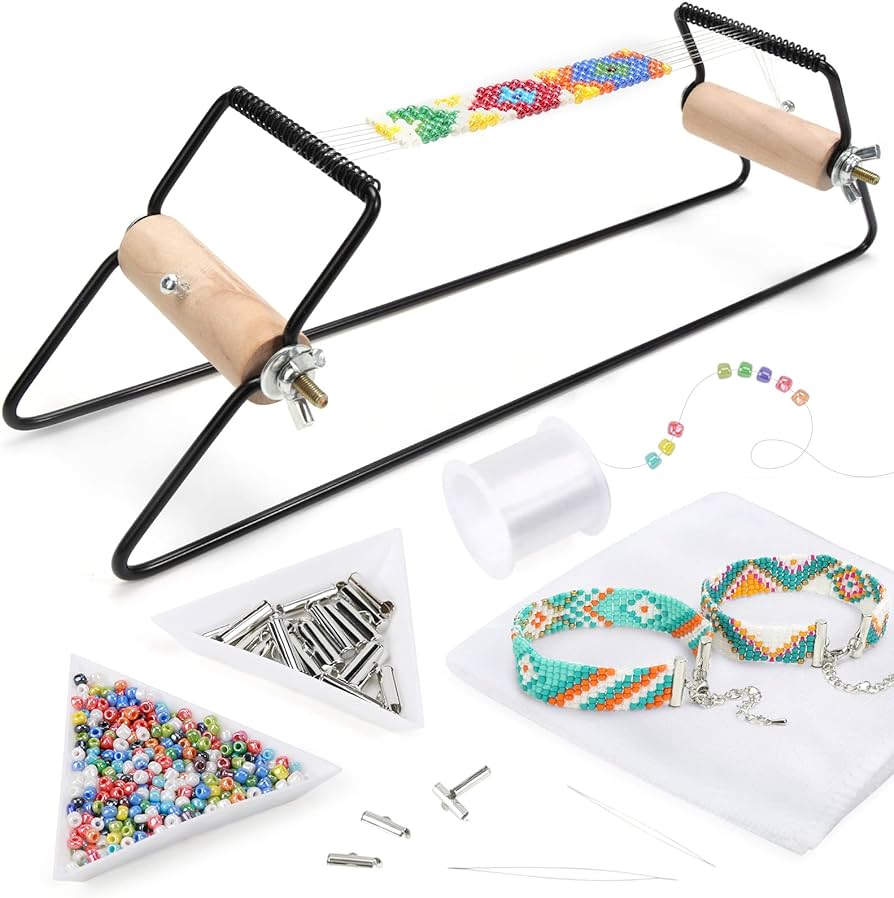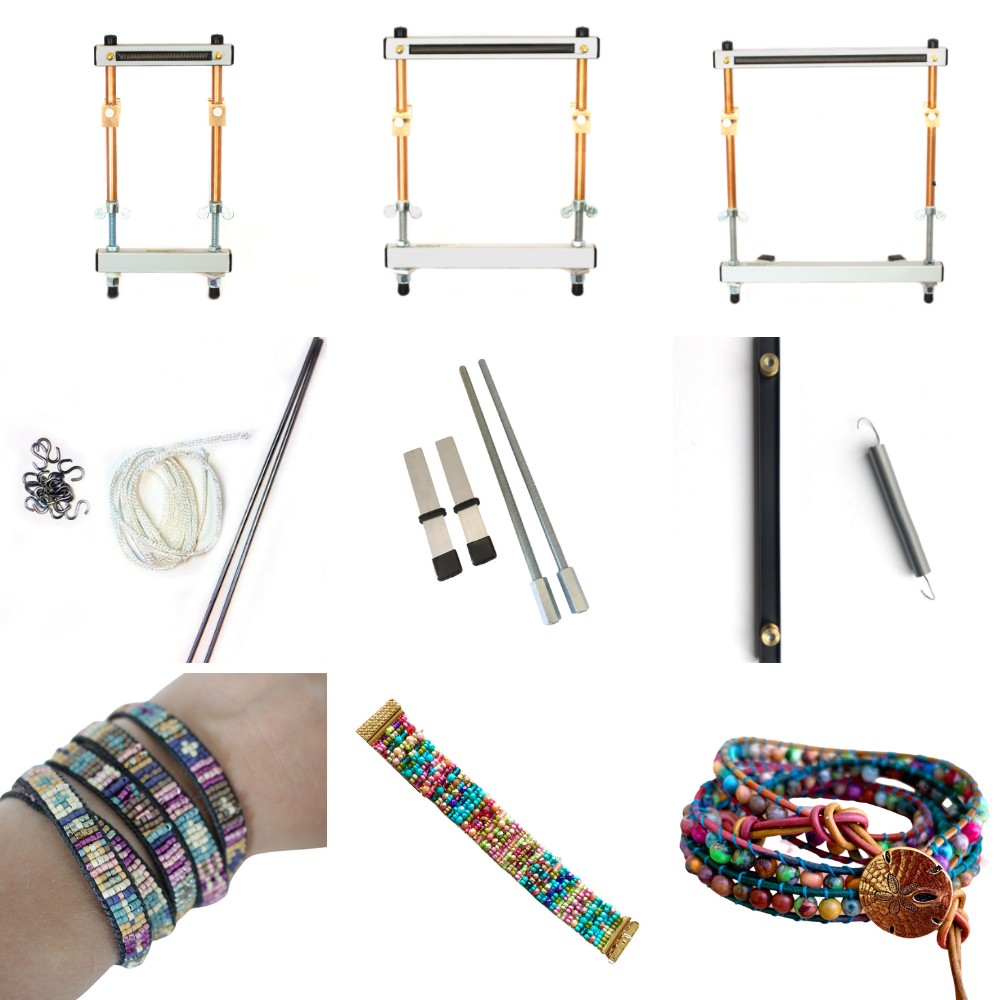Introduction to Loom Beading
The Allure of Loom Beading
Loom beading is a traditional craft that has captivated artisans and hobbyists for generations. Understanding the allure of loom beading helps us appreciate its enduring appeal and intricate beauty. This art form involves using a loom to weave beads into elaborate patterns and designs, resulting in stunning jewelry, accessories, and decorative items.
The process of loom beading is both meticulous and rewarding, requiring patience, precision, and creativity. The rhythmic motion of weaving beads onto threads, one by one, offers a meditative experience that many find deeply satisfying. Beyond its therapeutic benefits, loom beading provides a creative outlet where crafters can bring their imaginative designs to life.
Loom beading is steeped in history, with roots in various cultures around the world. Indigenous communities, particularly in North America, have long used loom beading to create beautifully crafted pieces that tell stories and preserve traditions. Modern-day enthusiasts continue to draw inspiration from these rich cultural practices, blending traditional techniques with contemporary designs.
Understanding the allure of loom beading reveals its multifaceted nature, combining art, history, and craftsmanship. This intricate art form allows individuals to express their creativity while connecting with a broader cultural heritage. By exploring the world of loom beading, we gain insight into the timeless beauty and craftsmanship that make it so captivating.
Essential Tools and Materials
The Loom
The loom is the cornerstone of any loom beading project, providing the structure and support needed to create intricate designs. Understanding the different types of looms helps artisans choose the best one for their needs. There are several types of looms available, ranging from simple handheld versions to more complex, adjustable table looms. Each type has its unique features, benefits, and limitations.
Handheld looms are compact and portable, making them ideal for small projects and beginners. These looms are usually made of lightweight materials, such as plastic or wood, and are easy to set up and use. However, their size limits the scope of the designs that can be created.
Table looms, on the other hand, offer more versatility and stability. These looms are larger and more robust, allowing artisans to work on bigger and more complex projects. They usually feature adjustable tension systems, which help maintain even tension throughout the weaving process. The added stability and control make table looms a popular choice for experienced beaders.
Regardless of the type of loom used, proper setup is essential for a successful project. This includes threading the loom with warp threads, which act as the foundation for the beadwork. Understanding the importance of the loom and its setup ensures a smooth and enjoyable beading experience.
Beads and Threads
Selecting the right beads and threads is crucial for achieving desired results in loom beading. Understanding the different types of beads and threads available helps artisans make informed choices. Beads come in various shapes, sizes, and materials, each offering unique visual effects and design possibilities. Common types of beads used in loom beading include seed beads, delica beads, and bugle beads.
Seed beads are small, round beads that are versatile and widely used in loom beading. They are available in various sizes, with size 11/0 being one of the most popular for detailed designs. Delica beads are cylindrical and uniform in size, creating a more precise and polished look. Bugle beads are long, tubular beads that add texture and dimension to beadwork.
Threads play an equally important role, providing the strength and flexibility needed for a secure and cohesive design. Nylon, polyester, and monofilament threads are commonly used in loom beading. These threads are durable, resistant to fraying, and available in various thicknesses to suit different project needs.
Choosing the right combination of beads and threads ensures that the final piece is both beautiful and durable. By understanding the properties and benefits of each type, artisans can create intricate and visually stunning beadwork that stands the test of time.
Step-by-Step Loom Beading Process
Setting Up the Loom
Setting up the loom is the first step in any loom beading project, laying the foundation for the entire process. Understanding the proper setup ensures a smooth and successful beading experience. Begin by securing the loom on a stable surface to prevent any movement during the weaving process. Adjust the tension if the loom has an adjustable system, ensuring that it is evenly distributed.
Next, warp the loom by threading warp threads vertically across the loom’s frame. The number of warp threads depends on the design’s width and the bead size used. Secure each end of the warp threads to the loom, making sure they are evenly spaced and taut. Proper tension is crucial for maintaining the integrity and alignment of the beadwork.
Once the loom is set up, prepare your beads and threads. Thread a needle with the chosen beading thread and tie a secure knot at the end. String the first row of beads according to your pattern, ensuring an even and cohesive look. Understanding the setup process helps create a strong foundation for intricate and detailed loom beadwork.
Weaving the Beads
Weaving the beads onto the warp threads is the heart of loom beading, transforming individual beads into cohesive designs. Understanding the weaving process helps artisans achieve precise and beautifully crafted beadwork. Begin by sliding the threaded needle with beads under the warp threads, positioning the beads between the threads as per the pattern.
Gently push the beads up so that they sit on top of the warp threads. Hold the beads in place with one hand while guiding the needle back through the beads, this time over the warp threads, with the other hand. This weaving motion secures the beads between the warp threads, creating the first row of your design.
Continue weaving the beads row by row, following your pattern meticulously. Pay attention to the tension of the thread, ensuring it remains consistent to avoid any gaps or unevenness in the beadwork. Regularly check the alignment of the beads to maintain a uniform look. Understanding the weaving process allows artisans to create intricate and detailed designs with precision and ease.
Finishing Touches
Completing a loom beading project involves adding the finishing touches that ensure the beadwork is secure and polished. Understanding these final steps helps achieve a professional and durable finish. Once the desired length is achieved, tie off the working thread securely. Weave the thread back through several rows of beads to anchor it before trimming any excess.
Carefully remove the beadwork from the loom by cutting the warp threads near the loom’s frame. Tie off each end of the warp threads securely to prevent the beads from unraveling. For added durability, apply a small dab of fabric glue to the knots.
To finish the piece aesthetically, consider adding clasps, fringes, or other embellishments as desired. Understanding the finishing touches ensures that the beadwork is not only beautiful but also securely assembled and ready for use. These final steps complete the transformation of individual beads into a cohesive and stunning piece of art.
Creative Design Ideas and Inspirations
Traditional Patterns
Traditional patterns serve as a rich source of inspiration for loom beading projects, offering timeless designs imbued with cultural significance. Understanding the meaning and symbolism behind traditional patterns enhances the creative process. Many traditional designs originate from Indigenous cultures, featuring geometric shapes, floral motifs, and symbolic representations.
Geometric patterns, such as chevrons, diamonds, and zigzags, are common in traditional beadwork. These patterns often carry cultural significance, representing elements of nature, spirituality, and community. Floral motifs, inspired by the natural world, showcase the artisans’ connection to their environment and their appreciation for its beauty.
Incorporating traditional patterns into loom beading projects honors the rich heritage and artistry of Indigenous cultures. Artisans can adapt these designs to create contemporary pieces that pay homage to tradition while reflecting modern aesthetics. Understanding the importance of traditional patterns provides a deeper appreciation for the cultural heritage and artistic expression in loom beading.
Modern Trends
Modern trends in loom beading introduce fresh and innovative designs, inspiring artisans to experiment with contemporary styles. Understanding these trends helps artisans stay current and explore new creative possibilities. Popular modern trends include minimalist designs, bold color combinations, and mixed media projects.
Minimalist designs emphasize simplicity and elegance, often using a limited color palette and clean lines. These designs create a sophisticated and timeless look, suitable for various styles and occasions. Bold color combinations, on the other hand, add vibrancy and energy to beadwork, making a strong visual impact.
Mixed media projects combine beads with other materials, such as fabric, leather, and metal, to create unique and textured pieces. This approach offers endless possibilities for creativity, allowing artisans to explore new techniques and combinations. Understanding modern trends in loom beading encourages experimentation and innovation, pushing the boundaries of traditional craftsmanship.
Conclusion: The Timeless Art of Loom Beading
Loom beading is a timeless and intricate art form that offers endless creative possibilities. Understanding its allure, essential tools, and step-by-step process provides a comprehensive appreciation for this craft. From the precision of the weaving process to the cultural significance of traditional patterns, loom beading encompasses both artistry and heritage.
By exploring modern trends and experimenting with new techniques, artisans can continue to innovate and expand the boundaries of this craft. The blend of tradition and modernity ensures that loom beading remains relevant and captivating for generations to come.
In conclusion, loom beading is much more than a hobby; it is an art form that connects individuals to their heritage and allows for endless creative expression. Whether inspired by traditional patterns or modern trends, loom beading provides a meditative and rewarding experience that transforms individual beads into stunning works of art.
